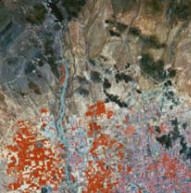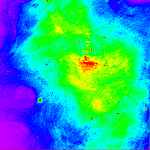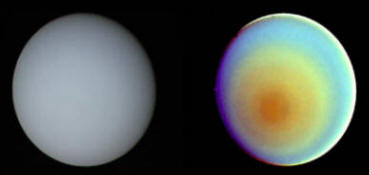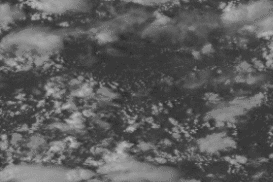Importance of Light
Dr Imran Khanlife Á Light
Here is a false-color image of Phoenix. How does it compare to the true-color and space shuttle images on this page?

A false-color image is made when the satellite records data about brightness of the light waves reflecting off the Earth's surface. These brightnesses are represented by numerical values - and these values can then be color-coded. It is just like painting by number! The colors chosen to "paint" the image are arbitrary, but they can be chosen to either make the object look realistic, or to help emphasize a particular feature in the image. Astronomers can even view a region of interest by using software to change the contrast and brightness on the picture, just like the controls on a TV! Can you see a difference in the color palettes selected for the two images below? Both images are of the Crab Nebula, the remains of an exploded star!


Here's another example - the below pictures show the planet Uranus in true-color (on the left) and false-color (on the right).

The true-color has been processed to show Uranus as human eyes would see it from the vantage point of the Voyager 2 spacecraft, and is a composite of images taken through blue, green and orange filters. The false color and extreme contrast enhancement in the image on the right, brings out subtle details in the polar region of Uranus. The very slight contrasts visible in true color are greatly exaggerated here, making it easier to studying Uranus' cloud structure. Here, Uranus reveals a dark polar hood surrounded by a series of progressively lighter concentric bands. One possible explanation is that a brownish haze or smog, concentrated over the pole, is arranged into bands by zonal motions of the upper atmosphere.
What does Visible Light show us?
It is true that we are blind to many wavelengths of light. This makes it important to use instruments that can detect different wavelengths of light to help us to study the Earth and the Universe. However, since visible light is the part of the electromagnetic spectrum that our eyes can see, our whole world is oriented around it. And many instruments that detect visible light can see father and more clearly than our eyes could alone. That is why we use satellites to look at the Earth, and telescopes to look at the Sky!
 This is a visible light image of Phoenix, Arizona, taken from the GOES satellite. We often use visible light images to see clouds and to help predict the weather.
This is a visible light image of Phoenix, Arizona, taken from the GOES satellite. We often use visible light images to see clouds and to help predict the weather.

We not only look at the Earth from space but we can also look at other planets from space. This is a visible light image of the planet Jupiter. It is in false color - the colors were chosen to emphasize the cloud structure on this banded planet - Jupiter would not look like this to your eyes.
cidpusa.org